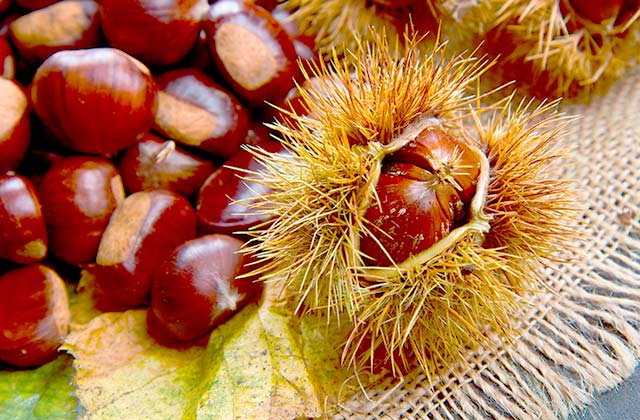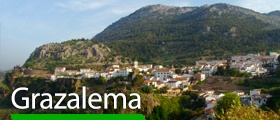
Chestnuts: The Finest Autumn Treat In The Genal Valley
Autumn arrives, and with it, one of the most characteristic fruits of this season: the chestnut. The Valle del Genal, in the Serranía de Ronda, is one of the areas par excellence where this fruit is cultivated and leaves a beautiful landscape of ochre and brown tones that bathe the mountain range. In this area, a type of chestnut is grown that is highly prized by international palates: pilongas chestnuts. It is a very peculiar variety of this area whose harvest lasts about a month during October. When the harvest ends, pilonga chestnuts of the Genal Valley become the protagonists of celebrations that take place in mountain villages like Ojén, Pujerra, or Arriate, where festivals are organized in their honor.
This typical product from the area is so treasured and holds such unique value that some of the festivals held in honor of the Pilonga chestnut are recognized as Provincial Tourist Interest Festivals.
What is the Pilonga chestnut?
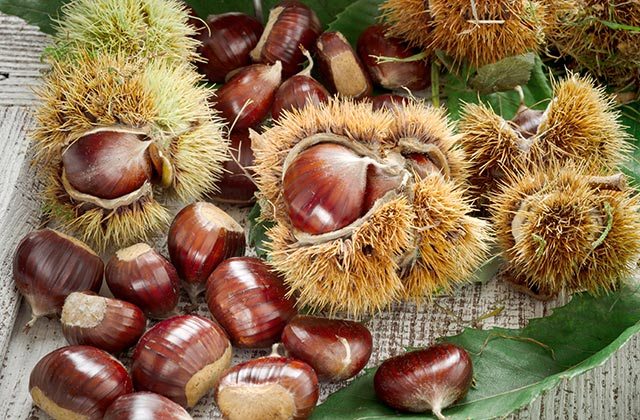
The Pilonga chestnut is an extraordinary variety of chestnut cultivated in the Valle del Genal, in the Serranía de Ronda, due to the climatic conditions that favor its cultivation.
But if you had to recognize one chestnut from another, it might be a little tricky.
The Pilonga chestnut is so named because, according to its etymology, pilonga means easy to peel. This type of chestnut is encased in a husk resembling a hedgehog, which makes it easier to peel, unlike other varieties of chestnuts that are difficult to skin. In addition, the goal is to achieve the dehydration of the chestnut through a drying process. In this way, we could easily recognize when it is a pilonga chestnut and when it is not.
The Pilongas chestnuts are also found in a unique environment of the Valle del Genal, known as El Bosque de Cobre, a beautiful forest in shades of ochre, yellow, and brown tones that every autumn reaches its maximum beauty, thanks to the chestnut trees of the place where the famous hedgehogs that cover the shell of the Pilongas chestnut are found.
History and tradition
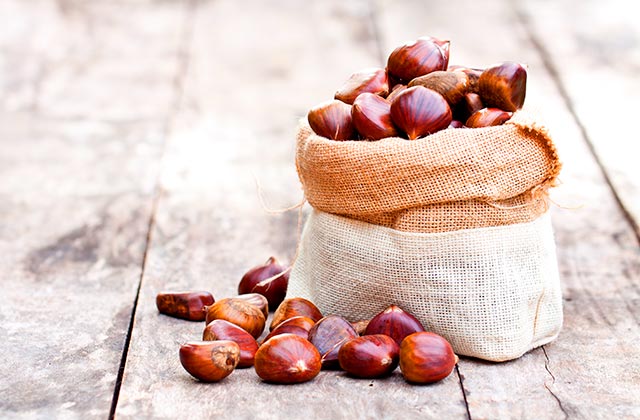
The chestnut is one of the quintessential nuts of this mountainous area and has long been, and continues to be, the main source of income for many villages in the Serranía de Ronda. This region has the largest chestnut production in the province of Málaga.
The harvesting of chestnuts began with the Romans, but it was not until the twentieth century, specifically the fifties, that this fruit was introduced to the Valle del Genal.
Many mountain villages are dedicated to the cultivation of this fruit. However, the largest production is found in Parauta, Igualeja and Pujerra.
Such is its importance and the boost it provides to the local economy that the chestnut is celebrated with various festivals and honors throughout the Serranía de Ronda. For instance, in Ojén, they celebrate the Fiesta del Tostón Popular on November 1st, where they roast chestnuts and drink anise liqueur. Similarly, in the village of Arriate, they hold the Fiesta de la Castaña (Chestnut Festival), where they also roast chestnuts and enjoy them with mistela, a liqueur made with anise. Another mountainous village that celebrates festivals in honor of this treasured fruit is Yunquera, with the Fiesta de la Castaña y el Vino (Chestnut and Wine Festival), specifically the must.
Gastronomic uses
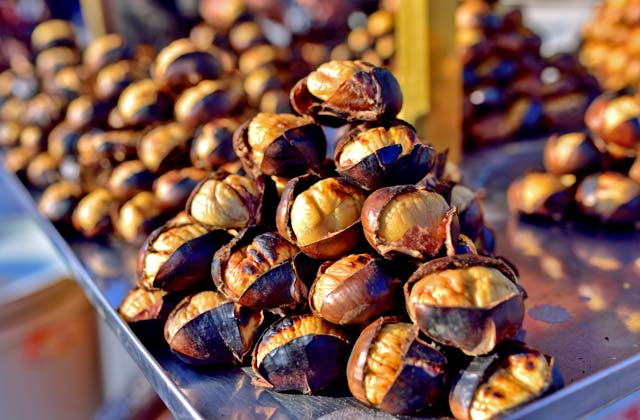
Chestnuts can be enjoyed roasted with salt, which is perhaps one of the most common ways to consume them. However, it is not uncommon to find dishes and recipes that use pilonga chestnuts as an ingredient that adds a special touch.
Some stews, soups, or roasts include chestnuts in their preparation, as is the case of lamb stew with chestnuts, a dish from the Serranía de Ronda where they offer this typical product in a recipe that will leave your palate with an unparalleled flavor. The chestnut stew, or olla de castañas (pot of chestnuts), is perhaps the most iconic dish of this area in Málaga, where chestnuts themselves are the stars of the plate. But perhaps you didn’t know that there are also lentils with chestnuts, which are said to be a true delicacy.
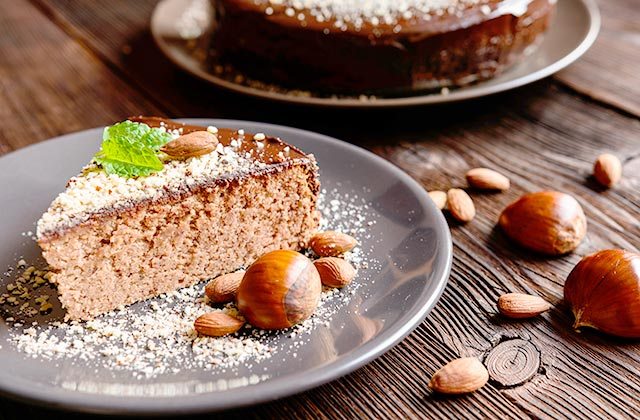
Another gastronomic use of this delicacy is sirloin stuffed with milk cap mushrooms, where the prized pilonga chestnut from the Genal area is used to give it that touch of tradition and mountain flavor.
Pilonga chestnuts also play a starring role in sweet flavors. To put the finishing touch on your gastronomic day through the Serranía de Ronda, you should try some of these desserts, such as chestnuts in syrup, chestnut cream, rice with chestnuts, or mistela, the local liqueur.
The marron glacé recipe is one of the best-known, although jams, chocolates, and creams are other culinary products where the chestnut plays a starring role.
Nutritional benefits
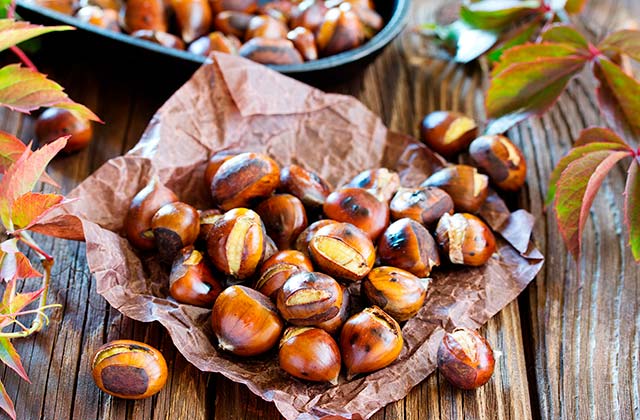
Pilonga chestnuts have several nutritional benefits that you might not know about and that can help improve your health. For example, they are low in fat, as they are mostly made up of water.
They are gluten-free, making them suitable for those with gluten intolerance, and they have a low glycemic index. This means that their carbohydrates are slowly absorbed, helping you feel fuller for longer.
They provide a lot of energy, making them highly recommended for athletes. They are rich in iron, which helps prevent anemia. Due to their high fiber content, they are ideal for preventing constipation and supporting intestinal health.
Pilonga chestnuts also help prevent cardiovascular diseases, as they are antioxidants and help reduce hypertension. Due to their mineral and B-vitamin content, they support nervous system health.
An interesting fact is that they also support dental and bone health, thanks to their calcium, phosphorus, and magnesium content.
Practical tips for Pilonga chestnuts
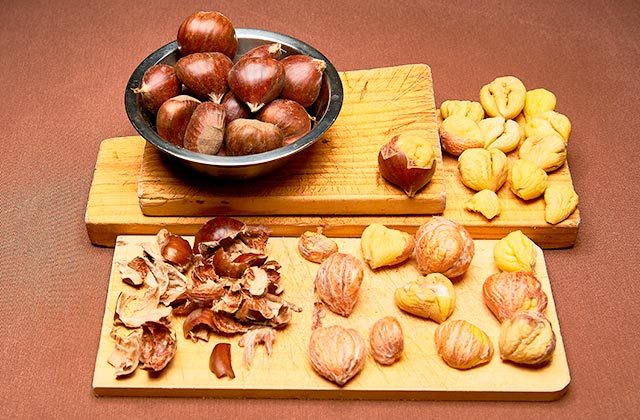
As you know, one of the most typical ways to enjoy pilonga chestnuts is roasted. However, if you plan to use them in stews, you should soften them first by soaking them in water the night before.
Legumes such as lentils or chickpeas pair very well with chestnuts in recipes. We recommend trying to cook them together so you can enjoy stews or soups in a new way.
If you’re a chestnut lover, you know that the season is quite short, which is why some people preserve them to enjoy throughout the months. One method of preservation is to air-dry them in a dark room for 12 days, and they’ll be ready.
Another way to extend their use over time is by making flour. Simply dry and grind them, and the flour will be ready for making desserts, bread, or even for breading.
Making chestnut cream or chestnuts in syrup is another way to preserve them. Besides being deliciously sweet recipes, they also extend the chestnut’s shelf life.
Curiosities
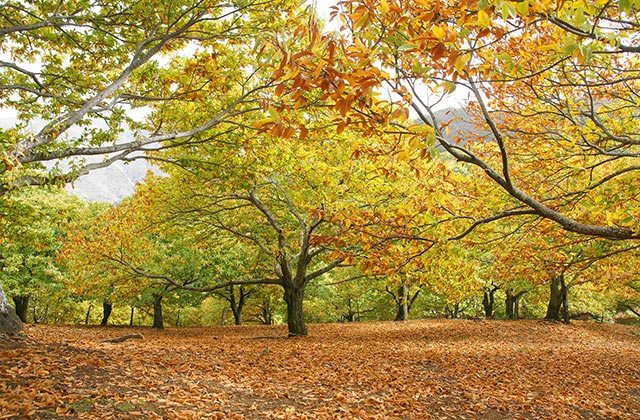
Did you know that the pilongas chestnuts from the Valle del Genal are a highly valued fruit beyond our borders?
Despite being one of the main sources of income for the villages in this area, the pilonga chestnut is relatively unknown within our region and country. However, this mountain-grown nut is highly valued in European countries like Italy, France, the United Kingdom, and Germany, where a large portion of the production is sent from cooperatives in places like Pujerra and Jubrique.
It is considered an exquisite product and is also part of the “Sabor a Málaga” brand.
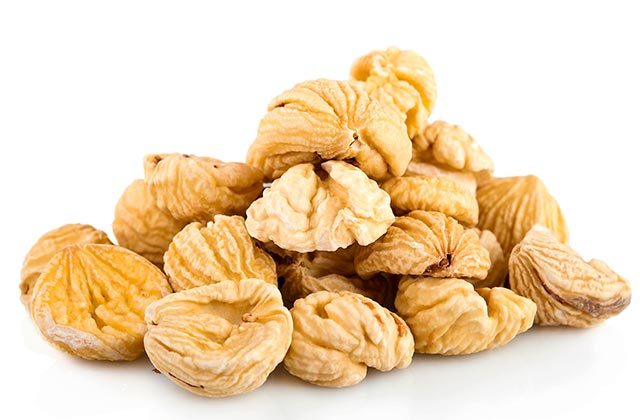
Another interesting fact about the pilonga chestnut from the Serranía de Ronda, which you might not know, is that in Parauta, at the cooperative where these nuts are dried, they initially thought they couldn’t achieve the right technique to produce pilonga chestnuts. However, just a few years ago, after several tests, they realized that the native chestnut of the area met the conditions needed to be classified and processed as such. They also use an unusual drying method that involves wood from pruned chestnut trees, which they burn in fireplaces to provide heat during the drying process and achieve the desired dehydration. All of this has contributed to the superior quality of pilonga chestnuts.
Chestnuts, the gourmet nut of Andalusian autumnal flavour
Discover the beauty of Bosque de Cobre in Malaga through its villages and its hiking trails
WHERE TO STAY
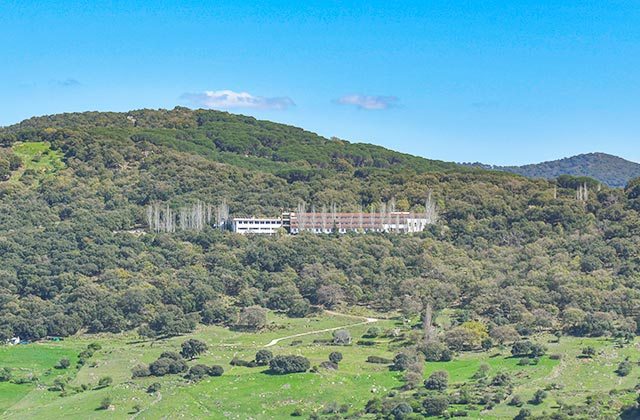
Hotel Fuerte Grazalema
The best option to stay in the province of Malaga and adventure yourself in Bosque del Cobre is Fuerte Hoteles. The chain has places where you can, in addition to its services, enjoy the best of each part of Andalusia. 60 years experience are the best guarantee. Marbella, Estepona or Grazalema are some of the sites where you can find these amazing hotels, an exceptional starting point for your private tour around Bosque del Cobre.
